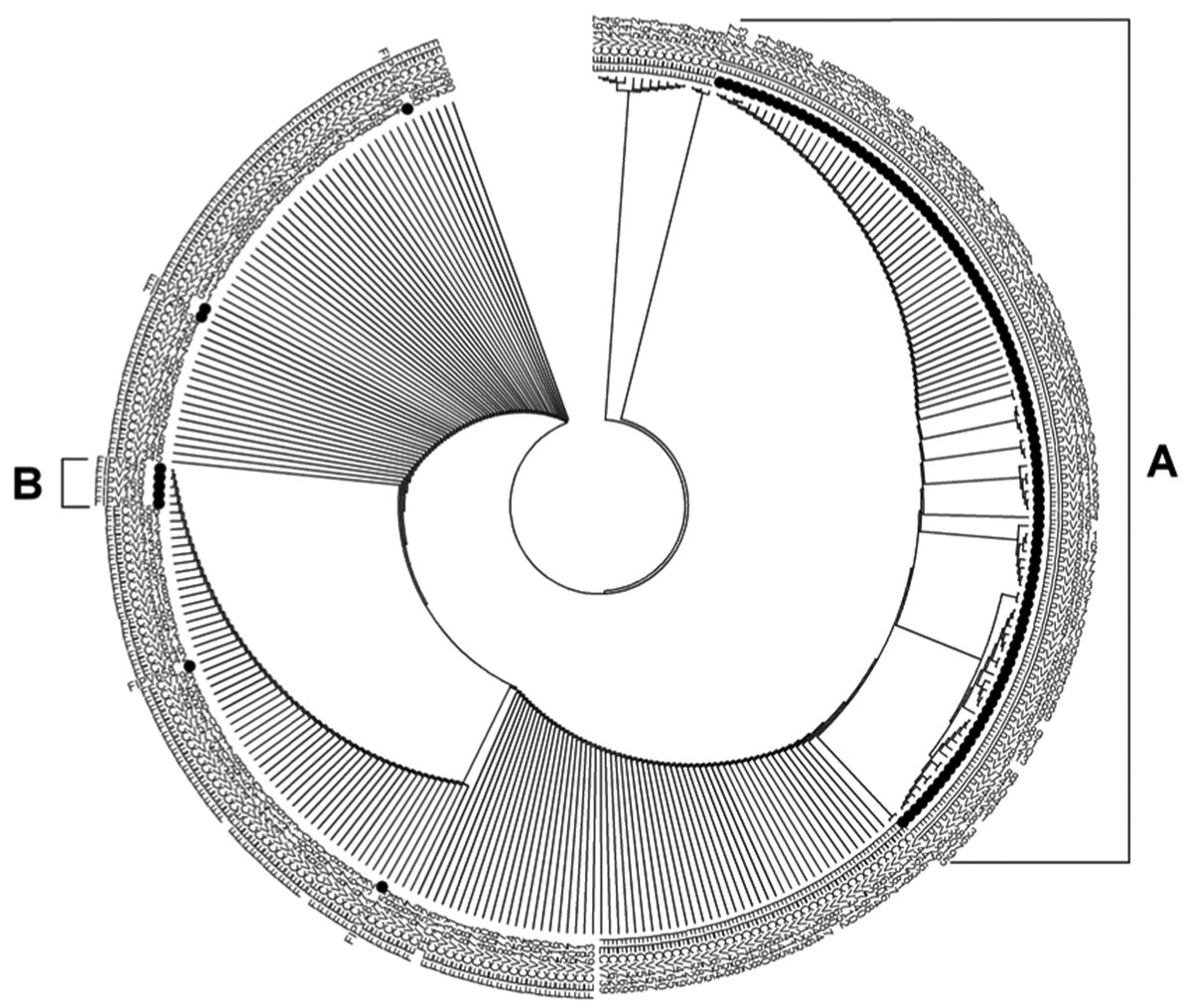Volume 18, Number 7—July 2012
Research
Spike Protein Fusion Peptide and Feline Coronavirus Virulence
Figure 3

Figure 3. . . Phylogenetic tree based on partial amino acid sequences (aa 1056–1069) of the spike proteins of 118 feline infectious peritonitis viruses (FIPVs) and 183 feline enteric coronaviruses (FECVs) obtained by using reverse transcription nested PCR and sequencing of the distinguishing genomic region. A circular rooted neighbor-joining tree was constructed by using the bootstrap method and applying 1,000 replicates. Black dots indicate FIPVs. Clade A comprises FIPVs containing the M1058L mutation; clade B comprises FIPVs containing the S1060A mutation.
Page created: June 13, 2012
Page updated: June 13, 2012
Page reviewed: June 13, 2012
The conclusions, findings, and opinions expressed by authors contributing to this journal do not necessarily reflect the official position of the U.S. Department of Health and Human Services, the Public Health Service, the Centers for Disease Control and Prevention, or the authors' affiliated institutions. Use of trade names is for identification only and does not imply endorsement by any of the groups named above.